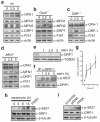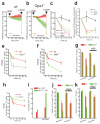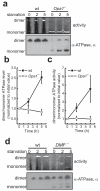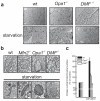During autophagy mitochondria elongate, are spared from degradation and sustain cell viability
- PMID: 21478857
- PMCID: PMC3088644
- DOI: 10.1038/ncb2220
During autophagy mitochondria elongate, are spared from degradation and sustain cell viability
Abstract
A plethora of cellular processes, including apoptosis, depend on regulated changes in mitochondrial shape and ultrastructure. The role of mitochondria and of their morphology during autophagy, a bulk degradation and recycling process of eukaryotic cells' constituents, is not well understood. Here we show that mitochondrial morphology determines the cellular response to macroautophagy. When autophagy is triggered, mitochondria elongate in vitro and in vivo. During starvation, cellular cyclic AMP levels increase and protein kinase A (PKA) is activated. PKA in turn phosphorylates the pro-fission dynamin-related protein 1 (DRP1), which is therefore retained in the cytoplasm, leading to unopposed mitochondrial fusion. Elongated mitochondria are spared from autophagic degradation, possess more cristae, increased levels of dimerization and activity of ATP synthase, and maintain ATP production. Conversely, when elongation is genetically or pharmacologically blocked, mitochondria consume ATP, precipitating starvation-induced death. Thus, regulated changes in mitochondrial morphology determine the fate of the cell during autophagy.
Figures








Comment in
-
Autophagy: shaping the fate of mitochondria.Nat Rev Mol Cell Biol. 2011 Jun;12(6):344-5. doi: 10.1038/nrm3116. Epub 2011 Apr 29. Nat Rev Mol Cell Biol. 2011. PMID: 21527952 No abstract available.
-
Mitochondria unite to survive.Nat Cell Biol. 2011 May;13(5):521-2. doi: 10.1038/ncb0511-521. Nat Cell Biol. 2011. PMID: 21540850
References
Publication types
MeSH terms
Substances
Grants and funding
LinkOut - more resources
Full Text Sources
Other Literature Sources
Molecular Biology Databases
Research Materials
Miscellaneous

